
Have you heard Maamme (“Our Land”), Finland’s national anthem? All Finns know at least the first verse of their kansallislaulu (“national anthem”) by heart. The song provides a fascinating glimpse into the Finnish mindset at a pivotal time in the nation’s history. And for a language learner, reading or listening to the 19th century lyrics is an interesting challenge to take on!
Don’t let the difficulty of it put you off, though – we will introduce you to the main themes and the key vocabulary to help you make sense of the Finnish lyrics. In this article, we’ll also shed light on the interesting history and evolution of the Finnish national anthem as well as its present-day status.
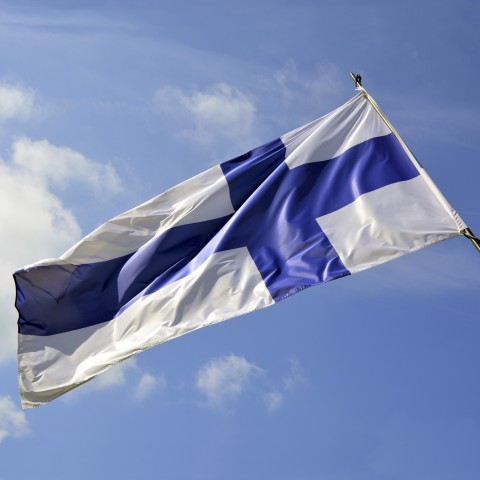
siniristilippu (“the flag of Finland”, literally: “blue cross flag”)
 Table of Contents
Table of Contents
- From Poem to National Anthem
- The Finnish Lyrics of Maamme
- When is it Played?
- Controversies
- How FinnishPod101 Can Help You Learn More Finnish
1. From Poem to National Anthem
A- The Lyrics
The story of Maamme begins in 1846, just a couple of years before the turbulent political upheavals of the Springtime of the Peoples shook Europe. This is when Finland’s national poet, Johan Ludvig Runeberg, penned a patriotic poem in Swedish titled Vårt land (“Our Land”). This poem would eventually become the Finnish national anthem’s lyrics.
The poem appeared as the prologue to Runeberg’s collection of heroic ballads, The Tales of Ensign Stål. These stories describe the events of the War of Finland that led to the country’s secession from Sweden and its establishment as an autonomous grand duchy of Russia in 1809. Although Finland wasn’t an independent country at the time, the sense of nationhood was on the rise, and Runeberg intended to stir these feelings further with his poem.
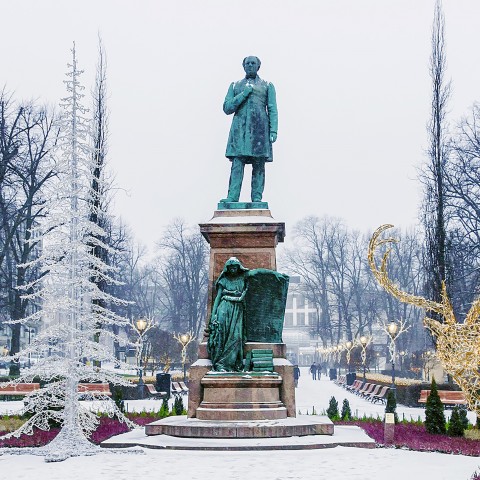
Statue of J. L. Runeberg, Helsinki
B- The Melody
Runeberg himself composed a melody for his poem, as did several others. However, it wasn’t until Fredrik Pacius, a German-born composer and music teacher at the University of Helsinki, got involved that Runeberg’s poem took off as a song. Pacius was tasked to compose a melody for Vårt land for the students’ Flora Day celebrations in May 1848. Allegedly, the composer did so with a light hand, intending to create a cheerful tune suitable for the lively springtime celebration. It is also said that he had only a couple of days to finish his composition and prepare the choir and musicians to perform it. His work was well received, though, with the audience eagerly requesting to hear the song again and again.
Today, a memorial stands at the site commemorating the first-ever performance of the national anthem.
C- The Finnish Translation
Over time, many people have translated Vårt land into Finnish. The established Finnish language text is often attributed to Paavo Cajander, who translated The Tales of Ensign Stål into Finnish in 1889. His work, in turn, is said to be based on an earlier translation of Runeberg’s poem by a group of poets led by Julius Krohn in 1867.
Translating the poem from Swedish into Finnish posed some challenges to all who took on the task. For example, in Runeberg’s original Swedish text, many of the lines begin and end with monosyllabic words which are common in Swedish but not in Finnish.
D- Position as the National Anthem
Maamme gained its position as the national anthem gradually and organically. Student choirs adopted the song with enthusiasm and in Finnish schools it was the most popular song taught to pupils for over a decade. The song was also a part of many official events, and was performed during the visits of the Russian emperors Alexander II in 1856 and Alexander III in 1885.
After Finland gained its independence in 1917, Maamme became the anthem of the “Whites” in the Finnish Civil War of 1918. Their opponents, the “Reds”, would sing the International and the Marseillaise. After a White victory, the position of Maamme as an anthem for the whole nation became stabilized. The Winter War (1939 – 1940) cemented the status of the song: it was played on the radio every night after news from the front and was a fixture at all patriotic events during the conflict.
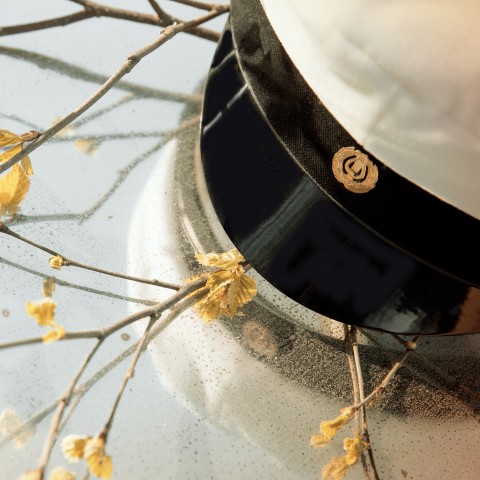
Finnish students played an important role in the history of the Finnish national anthem.
2. The Finnish Lyrics of Maamme
Maamme consists of 11 verses. Distinct themes are evident; the anthem explores the Finns’ love for the beauty of their land, looks back at the hardships and tribulations their ancestors lived through, and ends with a high note of optimism and hope for the future. It’s also notable that Maamme is very peaceful in its message. The lyrics emphasize patience, humility and being satisfied with one’s lot rather than revolutionary sentiments. The Finnish anthem praises the Finns’ ability to find happiness in what they have, however little that may be.
The line-by-line English translation below is as literal as possible to help you understand the somewhat archaic Finnish lyrics! You can find the original Swedish lyrics as well as the modern English adaptation on Wikipedia.
Beware: in poetry and songs, the typical word order of standard Finnish is often reversed! For example, you’ll find many instances of an adjective placed after a noun in these verses.
Take a look at the following vocabulary too before you dive in! Keep an eye out especially for the many variations of the words “country” and “dear” in the lyrics.
- maa (“country”, “land”, “ground”, “soil”)
- maailma (“world”)
- synnyinmaa (“birth country”)
- kotimaa (“home country”)
- isänmaa (“fatherland”, “home country”)
- isä (“father”, “forefather”, “ancestor”)
- kansa (“people”, “nation”)
- kallis (“dear”, also: “expensive”)
- kultainen (“dear”, “golden”)
- rakas (“dear”, “beloved”)
- armas (“dear”, “cherished”)
Verse 1
| Oi maamme, Suomi, synnyinmaa, soi, sana kultainen! Ei laaksoa, ei kukkulaa, ei vettä rantaa rakkaampaa, kuin kotimaa tää pohjoinen, maa kallis isien! | Oh our land, Finland, country of birth rings the dear word! No valley, no hill, no water more beloved, than this Northern homeland, dear country of fathers’! |
Verse 2
| On maamme köyhä, siksi jää, jos kultaa kaivannet Sen vieras kyllä hylkäjää, mut meille kallein maa on tää, sen salot, saaret, manteret, ne meist on kultaiset. | Our country is poor and so remains, if you crave gold A stranger will surely reject it, but for us this is the dearest country, its forests, islands, lands we hold them dear. |
Verse 3
| Ovatpa meille rakkahat koskemme kuohuineen, ikuisten honkain huminat, täht’yömme, kesät kirkkahat, kaikk’kuvineen ja lauluineen mi painui sydämeen. | They’re beloved to us our rapids gushing, the hum of eternal pines, our starry nights, bright summers, all the sights and sounds that are buried in the heart. |
Verse 4
| Täss auroin, miekoin, miettehin isämme sotivat, kun päivä piili pilvihin tai loisti onnen paistehin, täss Suomen kansan vaikeimmat he vaivat kokivat. | Here with plows, swords, thoughts our fathers waged war when the day hid in the clouds or shone with the light of happiness, here the direst for the people of Finland they experienced. |
Verse 5
| Tään kansan taistelut ken voi ne kertoella, ken? Kun sota laaksoissamme soi, ja halla näläntuskan toi, ken mittasi sen hurmehen ja kärsimykset sen? | The battles of this nation who can recount, who? When war in our valleys rang, and frost brought the pain of hunger, who measured its blood and its suffering? |
Verse 6
| Täss on sen veri virrannut hyväksi meidänkin, täss’ iloaan on nauttinut ja murheitansa huokaillut se kansa, jolle muinaisin kuormamme pantihin. | Here has its blood been shed for our benefit too, here has rejoiced and its sorrows sighed that nation, upon which our most ancient burden was put. |
Verse 7
| Tääll’ olo meill on verraton ja kaikki suotuisaa, vaikk onni mikä tulkohon, maa isänmaa se meillä on. Mi maailmass on armaampaa ja mikä kalliimpaa? | Here we feel wonderful and everything is favorable, whatever fortune may come, we have our fatherland. What in the world is more cherished and what dearer? |
Verse 8
| Ja tässä, täss’ on tämä maa, sen näkee silmämme. me kättä voimme ojentaa ja vettä rantaa osoittaa ja sanoa: kas tuoss’ on se, maa armas isäimme. | And here, here is this land, our eyes see it. we can stretch our hand and point at water, shore and say: look right there it is, the beloved country of our fathers. |
Verse 9
| Jos loistoon meitä saatettais vaikk’ kultapilvihin, mis itkien ei huoattais, vaan tärkein riemun sielu sais, ois tähän köyhään kotihin halumme kuitenkin. | If into glory we were ushered even to clouds of gold, where there’s no crying or sighing, rather the most important joy for the soul to gain, it would be for this poor home our desire nonetheless. |
Verse 10
| Totuuden, runon kotimaa maa tuhatjärvinen miss’ elämämme suojan saa, sa muistojen, sa toivon maa, ain ollos, onnees tyytyen, vapaa ja iloinen. | The home country of truth, poetry the land of a thousand lakes in which our life finds shelter, you land of memories, you land of hope, always satisfied with your fortune, free and glad. |
Verse 11
| Sun kukoistukses kuorestaan kerrankin puhkeaa, viel lempemme saa nousemaan sun toivos, riemus loistossaan, ja kerran, laulus synnyinmaa korkeemman kaiun saa. | Your blossom from its bud will burst out for once it’ll yet raise our love your hope, your joy in its splendor and once, your song oh country of birth a higher echo will gain. |
You can listen to Maamme on YouTube:
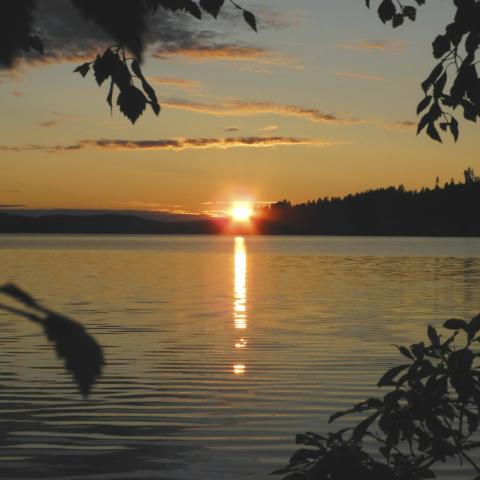
The beauty of the Finnish nature is an important theme in the national anthem.
3. When is it Played?
Today, Finnish children continue to learn and sing Maamme in school. The Finnish national anthem is also an important part of Independence Day celebrations on the 6th of December, and the song is played at international sporting events, such as the Olympics, when a Finnish athlete or team wins gold.
When the anthem is sung at an event, it’s customary to sing the first and the last verse of the song. This custom is said to originate in Taavi Hahl’s 1871 collection of male choir songs, which included only these two verses. On formal occasions, the anthem is sung in both Finnish and Swedish.
- Jääkiekko (“ice-hockey”) is one of the most popular Olympic sports in Finland. Learn the Finnish names of other important sports on the Talking About Olympic Sport vocabulary list.

Candles and Maamme are important parts of Finnish Independence Day celebrations.
- Find out How to Celebrate Finnish Independence Day like a Finn – also on the FinnishPod101 Blog – and learn important Finnish Independence Day vocabulary.
4. Controversies
Maamme does not have an official, legally defined status as the national anthem of Finland (unlike other national symbols like the Finnish flag). This has left plenty of room for discussion, and Finnish people have expressed opinions both for and against keeping their unofficial anthem.
Some of the criticism directed towards Maamme includes the assertion that the song isn’t ‘Finnish enough’ due to the fact that the lyrics were originally written in Swedish and the melody was composed by a German immigrant. Some have deemed the lyrics too passive in nature and call for a national anthem that reflects a more vigorous brand of nationalism. Some are bothered by the fact that the unofficial national anthem of Estonia, Mu isamaa, mu õnn ja rõõm (“My Fatherland, My Happiness and Joy”) uses the same melody composed by Pacius.
Other songs have been put forward to replace Maamme over the years. The most popular contender has been Finlandia-hymni (“Finlandia Hymn”). Jean Sibelius’ celebrated composition has been proposed multiple times and several citizens’ initiatives have been launched to set it as the official national anthem of Finland. However, Maamme remains popular and has its own staunch supporters; some Finns have called for a vote to make its position undisputed by law.
- What do you think? Whoever you side with, be sure to learn Must-Know Expressions for Agreeing and Disagreeing in Finnish!
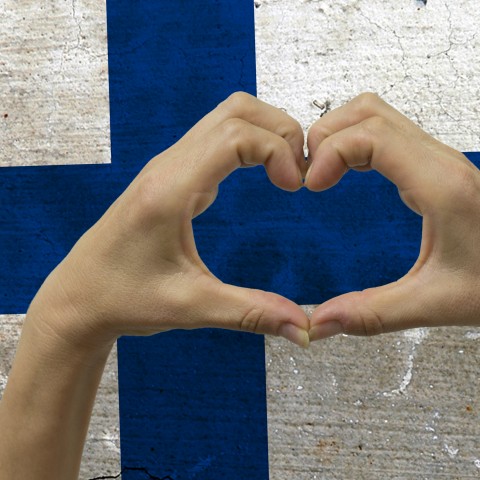
Maamme captured the hearts of Finns over time.
5. How FinnishPod101 Can Help You Learn More Finnish
In this guide, we’ve covered a lot of information about the Finnish national anthem, Maamme. We’ve learned about its origins, explored its themes and lyrics, and discussed its status in Finland today. How does the national anthem of Finland compare to the national anthem of your country? Share your thoughts and observations with us in the comments below!
If you want to learn more about Finland, visit FinnishPod101 and browse through our extensive lesson library – our teaching material combines grammar topics with cultural insights to make learning fun and engaging. Don’t forget to explore our free resources too, including our continuously expanding collection of fee Finnish vocabulary lists.
And finally, check out our premium service, My Teacher, if you want a personalized lesson plan and lots of 1-on-1 coaching with a private Finnish teacher. It’s the best way to make progress fast – and get answers to all your questions about the baffling aspects of the Finnish language!
Happy learning on FinnishPod101!









